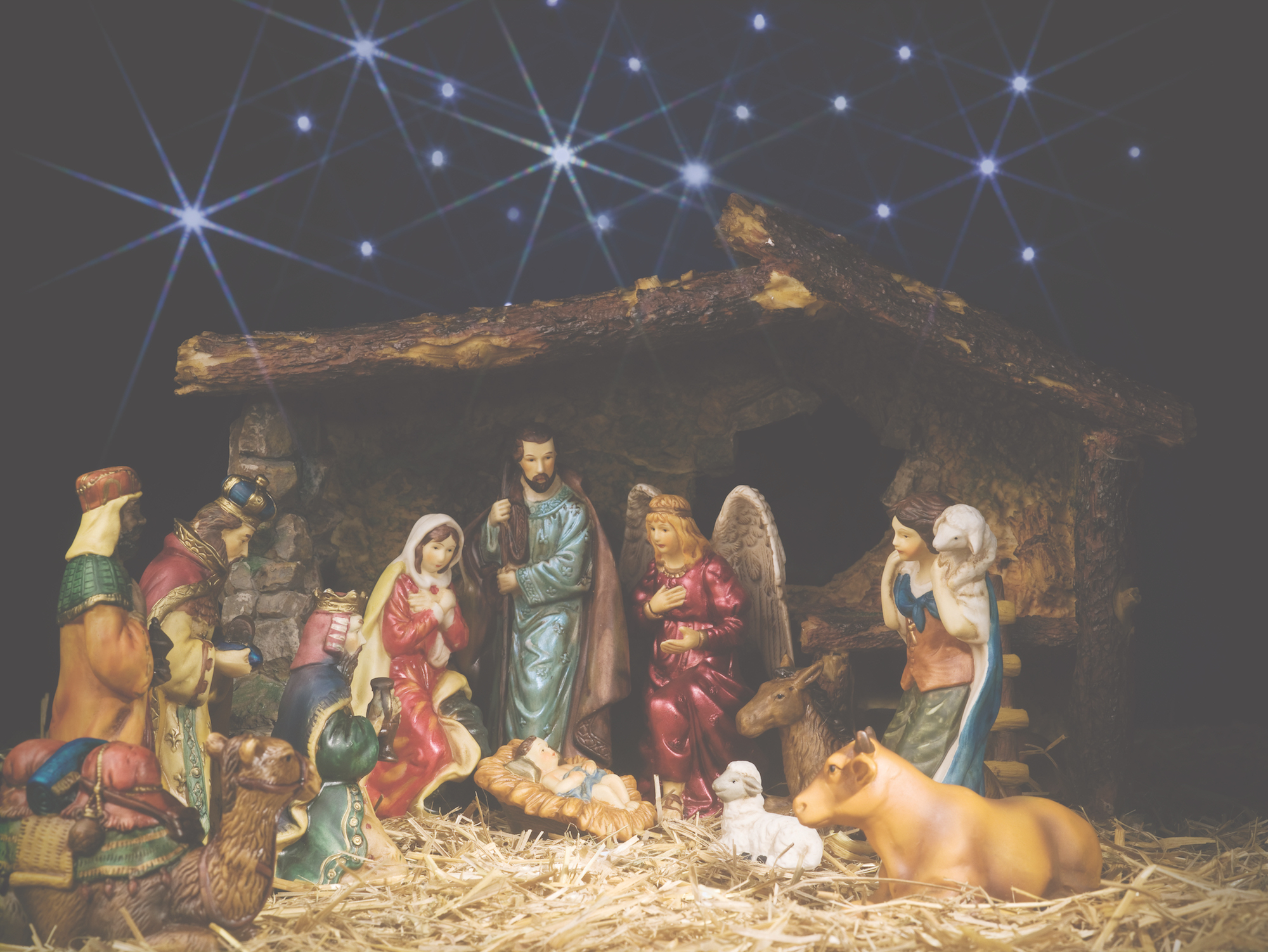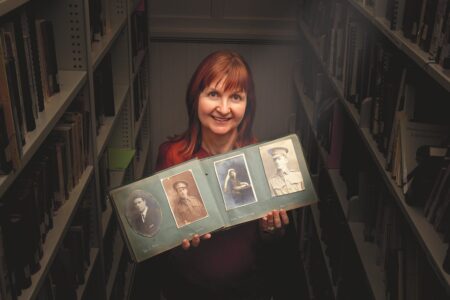By Stephen Acott
These are different days, unlike anything anyone can recall. Despite the fact there has never been an easier time to record and verify moments in time, almost everything is challenged.
Think climate change. Think Trump. Think Boris Johnson. Think News Ltd commentators. Think Fox News. Think “fake news”. It’s enough to make you want to stop thinking.
The point is, if irrefutable facts such as the size of Donald Trump’s inauguration crowd can be, well, trumped up, what chance do events before the digital age have of being accepted as fact? Look at the moon landing – there are very intelligent people who will look you in the eye and tell you it never happened.
For some, seeing does not equate to believing.
So is it any wonder that something or, rather, someone as significant as Jesus has every single fact of his birth, life and death questioned by some part of society? Some people point blank refuse to believe he even existed. But, as alluded to above, some people don’t let facts get in the way of a personally-held conviction.
That said, it could be argued Christianity doesn’t do itself any favours by perpetuating what it knows to be stories that may not be historically accurate. And many of those spring to life at this time of year.
When you go to church on Christmas Day take a moment to pause and look around you. It’s 25 December, the day Jesus was born. Except it’s not. See that nativity scene lovingly laid out up the front? Look closer, at the wooden crib, the sheep, the three wise men. They weren’t there. See the picture of Jesus on the wall? He didn’t look like that. You’ll probably hear about the “inn” with no room. That’s a misinterpretation, too.
There are plenty of reasons why many believe none of the above are historically accurate and, interestingly, depending on who you talk to, you get a different answer as to why. One thing everyone agrees on, however, is that the birth stories were written in retrospect – that is, no one was taking notes at the time. And why would they? No one knew this was to be a birth for the ages. Or that the child that subsequently grew into adolescence was any different from his peers.
It was only when Jesus started preaching that anyone started to take notice, and he was in his thirties by then. And it was only when he died or, more particularly, when he was raised from the dead that people realised the significance of the life they had just witnessed. Looking back on what had happened, they wrote stories that went beyond the basic historical reality to communicate how important this life had been.
Does this matter? Not really. What counts is the big picture and, sticking with this analogy, it’s the biggest picture ever painted.
Sean Winter is someone worth speaking to on this subject. He’s not a painter, but a biblical scholar. As someone who teaches a course on the historical Jesus at Pilgrim Theological College, he’s done more than his fair share of research and presents a well-informed and articulated view. But even he concedes it’s only an opinion.
“There is nothing about this story that isn’t contested,” Sean says at the outset with no sense of dismay.
“The reason why things are contested is because our sources (in the Bible) don’t give us anything other than much later interpretations of his life. When you read the gospels you are basically looking at the equivalent of an omelette and it is very difficult to separate it back out into the yolk, which is historical, and the white, which is interpretation.
“Almost every detail of his birth or how it was narrated or what historically is in the Christmas story is open for significant debate. My view is the Gospel stories about Jesus’s birth are almost all interpretation.
“It doesn’t matter if they are not historically accurate because when we celebrate Christmas we are not remembering what happened. It’s a drama, it’s a narrative and in retelling the narrative we are not making a claim to its historical accuracy, we are simply saying this is an important story for the Church and the life of the world.”
That’s true, but 25 December is a significant day on the Christian and Australian calendar. It’s Christmas Day and it’s Christmas Day because that’s the day we associate with the birth of Jesus. So, if Jesus wasn’t born on 25 December, when was he born? Short answer is no one knows, but how did we end up with 25 December? It seems the more people you ask, the more answers you get.
Historian Andrew McGowan tackles this very issue in a story published under the heading: “How December 25 became Christmas”. He says there are two theories; one popular (it was connected to pagan celebrations) and one more out of left field. He leans to the latter, arguing the date had more to do with Jesus’s crucifixion in the minds of ancient theologians.
For them, linking Jesus’s conception with his death nine months before 25 December was important for underscoring salvation.

“Strange as it may seem, the key to dating Jesus’s birth may lie in the dating of Jesus’s death at Passover,” he says.
“Around 200 CE, Jesus was believed to have been conceived and crucified on the same day of the month. Exactly nine months later, Jesus was born, on December 25.
“Connecting Jesus’s conception and death in this way will certainly seem odd to modern readers, but it reflects ancient and medieval understandings of the whole of salvation being bound up.”
So that’s his theory. Closer to home Sunny Chen, Presbytery Minister of Yarra Yarra and Adjunct Faculty at Pilgrim, has also done some study into Jesus’s birth and death. He says the focus in the early Church was on Easter and that celebrating Christmas came much later.
“There is a particular argument that after the 12th century, with the emergence of romantic literature, people started to focus on feelings,” he says.
“Before that it was all ‘epic’ stories and Jesus and his resurrection was the hero. But as time went on there was a shift from ‘epic’ to ‘romance’ and Christmas became more of a focus because it was about a baby who was born helpless.
“December 25 was chosen to celebrate the birth of Christ by the early Church in the 4th century. I’m not saying this from a historical accuracy point of view, but we are talking about pagan worship and, according to one understanding, in the ancient time the Babylonians worshipped their Sun God and chose December 25, since this was considered in the Northern Hemisphere as the Winter Solstice. That was the birth date of their Sun God.
“The early Church adopted many pagan dates possibly as a way to be more inclusive because Christianity was being outreached to many pagans. There is also the notion the early Church saw Jesus as the light of the world so light and sun were similar symbols.
“But my view is, whether December 25 is truly the day Jesus was born doesn’t really matter – what’s more important is the meaning behind it. It’s a day to reflect on the birth of Jesus.”
Sunny’s right. Meaning is everything. Many people don’t know their true date of birth and that doesn’t change anything about them. And if the day is not right, and is accepted as such, does it matter if other accepted “facts” turn out to be a little dubious? Things such as the room at the inn or what we perceive as the nativity scene? Surely what matters is who Jesus said he was. He never said he was born in a manger after his parents were turned away by an innkeeper. He never said he was visited by three kings. These are our stories, not his.
However, be they fact or fiction, they are still worth exploring in more detail. Let’s begin with where Jesus was born. ACU scholar Stephen Carlson is unequivocal: “There is no inn, no innkeeper, and no stable.” Right then. If there was no inn, no innkeeper, and no stable what was there?
“Joseph took his betrothed Mary to Bethlehem, his home town, and, in accordance with the patrilocal marital customs of the day, it must also have been the place where they finalised their matrimonial arrangements by bringing her into his home,” Stephen says.
“As a newly married man, he no longer would have to sleep in the main room of the village house with his other relatives, but he and his bride could stay in a marital chamber attached to the house.
“They stayed there for some time until she came to full term, and she gave birth to Jesus in the main room of the house rather than in her marital apartment because it was too small, and she laid the newborn in a manger common to the main room of a farmhouse.
“Joseph and Mary’s particular accommodation should be thought of as a cramped, marital chamber attached to his father’s or relative’s village house.”
So that’s Stephen’s view but, if you’ll pardon the pun, it shouldn’t be taken as gospel. Sunny, for example, has another view. He says the story portrays an inn and a manger, if that’s what you want to call it, but they are not as has been told through the ages and, therefore, not as you perceive it.
He says Mary and Joseph would have stayed in some sort of accommodation, let’s call it an inn, and that building would have been attached to the front of a cave carved out of rock.
“People would stay in the inns and the animals would be in the adjoining cave,” Sunny says. “So the manger would have been located in a stone cave and Jesus, when he was born, would have been placed in a stone trough that would have been used to feed the animals.”
In other words, no barn and no wooden crib filled with straw. But Sunny sees that as a plus.

“When I reflect on the story, I really like the symbolic imagery of Jesus being the light of the world being born to a dark cave, and it echoes his death: his body was laid inside a dark tomb,” he says.
But just as Sunny challenges Stephen’s view, Sean gives another perspective less concerned with the historical details.
“I don’t think we know what the reality of the birth scene was,” Sean says.
“My view is that the gospel writers at least a generation after the fact created stories that invest the birth with enormous significance. In the ancient world, the way you did that was to tell stories with little regard for whether they were historically accurate. They’re not based on any objective memory.
“I don’t have any picture in my mind other than the one that has been bequeathed to us all historically. I’m completely shaped by the way it’s been described in the Biblical text. But there are certain things about it that I don’t think need to be historical. For example, I don’t think there were shepherds and I don’t think there was a star overhead.
“The most recent research suggests he was born in a room in a house, not in a cave or a stable. So who knows?”
OK, let’s pause for a moment and take a couple of steps back, back past the nativity scene, the manger and inn. Let’s go back nine months and address one of the fundamental “truths” many Christians hold, not just dear, but sacred – the Virgin Mary.
This is a big claim and, in light of modern science, a giant leap of faith. A leap so large, more and more Christians are not prepared to make it. And that’s fair enough because, as we’ve already seen, everything about this story is up for interpretation and debate.
Alice Camille, writing in U.S. Catholic says Mary isn’t portrayed as a virgin for biological reasons, but rather for theological ones. “Female biology was poorly appreciated in the first century,” she says. “It was held that males alone generated life by their seed. Women’s bodies were merely the ‘soil’ in which this seed was planted; they made no genetic contribution.
“The consequence of Mary’s virginity, then, isn’t about Mary at all. It’s about the paternity of Jesus. Is God his father?”
Geza Vermes was Professor Emeritus of Jewish Studies at Oxford. He said, considering the importance of the Virgin Mary in Christianity, it was surprising how little supporting evidence appeared in the New Testament.
“St Paul never speaks of the virginal conception. All we learn from him is that Jesus had a Jewish mother,” he said.
“Nor does the New Testament ever state that Mary remained a virgin.”
To cut a longish story short, Geza doubted Mary was a virgin when she gave birth to Jesus. So too does Sean.
“In recent times, in light of our understanding of modern science and how the human body works, people, myself included, would be more skeptical about that,” he says.
“Our earliest Christian traditions and New Testament texts don’t seem to be interested in the idea of a virgin birth.”
As far as this narrative goes, whether Mary was a virgin or not is of importance. If she found herself pregnant despite her virginity then surely alarm bells must have been ringing. Who was this child she was carrying? Was he other-worldly? Conversely, if she wasn’t a virgin then there would be no need to think anything extraordinary was taking place.
Sunny doesn’t hold a firm view as to whether Mary was virginal or otherwise. That said, he believes Mary would have had some idea that “something special” was taking place, “but I doubt she would have realised the full extent at that time”.
There’s something we haven’t done so far and that is go directly to the gospels. Now is as good a time as any. Let’s hear from Luke (with edits).
“During Elizabeth’s sixth month of pregnancy, God sent the angel Gabriel to Nazareth, a town in Galilee, to a virgin. She was engaged to marry a man named Joseph from the family of David. Her name was Mary. The angel said to her, ‘Don’t be afraid, Mary; God has shown you his grace. Listen! You will become pregnant and give birth to a son, and you will name him Jesus. He will be great and will be called the Son of the Most High.
“Mary said to the angel, ‘How will this happen since I am a virgin?’ The angel said to Mary, ‘The Holy Spirit will come upon you, and the power of the Most High will cover you. For this reason the baby will be holy and will be called the Son of God.”
Luke doesn’t leave much room for debate. Mary, clearly, is a virgin. And yet … and yet, Sunny begs to differ. Not because he doesn’t believe Luke, more that people are either reading Luke too literally or through the wrong prism. Let’s begin with the angels.
“The Greek word for ‘angel’ is aggelos (angelos), which means messenger,” he says. “Whether you believe an angel is an angel or just a messenger, the key point is a message from God is being delivered.
“Some people dwell too much on historical accuracy and others don’t care about it. My concern is the key meaning conveyed behind these stories.”

While we’re on the subject of historical accuracy, let’s look at Jesus – as in, let’s literally look at him. Picture Jesus in your mind. Focus on his facial features. What do you see? White complexion and Caucasian characteristics? Of course you do. That’s the only image painted, depicted and marketed. Yet Jesus was a Jewish man of Palestinian heritage. Why do we insist on making him white? Why is no one calling this out?
Sunny doesn’t know and, if he’s honest, isn’t overly concerned.
“Those paintings are just artists reimagining what Jesus would have looked like and they would have been linked to the culture of the day,” he says.
“A Palestinian Jew would have had a much darker complexion than the person we see depicted in the paintings as Jesus.”
And Sean? He says whitewashing Jesus is problematic.
“We get no physical description from our Biblical sources, which is in contrast to lots of other biographies from the ancient world, where authors did give us a physical snapshot,” he says. “This again suggests this detail held no significance for those first writers. So what happens is the ongoing memory of Jesus portrays him in the light of ongoing cultural assumptions and that happens right from the earliest period.
“So, yes, it’s racialised in that Jesus is white and de-Semitised. So, undoubtedly, the portrayal we have of a well-groomed whitefella is not accurate.
“Insofar as those pictures reinforce problematic aspects of our own culture, ie white supremacy, then yes it is problematic.
“But the fact they are not historically accurate is not problematic because any image we had would not be historically accurate.
“So the reason it’s problematic is it legitimises certain assumptions that Christianity is a white person’s religion, which it’s not.”
But should we be making more of an effort to portray Jesus as he truly was?
“Yes and no,” Sunny says. “It’s a misrepresentation, but this is the way most people find it easy to picture Jesus and worship him, and that’s fine. However, I think it (making Jesus less white) should be part of our journey as a Church to help others to have a better understanding of the gospel stories, so that we gain a different and helpful perspective on Jesus.
“Some African American churches in the USA portray Jesus as a black man in their artworks. And there is nothing wrong with that.”
No matter what angle you come at this story from, there is no denying it is something special.
And in an age where everything is up for debate one thing is beyond dispute: Jesus was the most significant man or woman to walk on the face of the Earth. Here we are, 2000 years later still talking about him.
Facts may be scarcer than fiction, but nothing detracts from the core narrative, which is, as Sean says, “this human life wasn’t just a human life”.
“My view is when I pray I am praying to the God who raised Jesus from the dead and, as a result of that, I now see this was a human life in which God was fully present,” he says.
“In the theological tradition there is a fundamental difference between the historical Jesus, Jesus the man, and the Christ of faith. But that doesn’t mean they are not the same person. They are related to each other, but distinct.”
Interestingly, both Sean and Sunny believe if Jesus was alive today we still wouldn’t comprehend his significance.
“There is nothing in Jesus’s story that would make it obvious to us that he is God,” Sean says.
“I don’t think Jesus did anything to make people go ‘oh look here comes God’ and I don’t think he did anything to make himself think he was God. This all happens after he dies.”
Sunny simply points to Trump.
“How is Trump believable, given people say he says so many lies? So, if you flip that, you can say all the truths in the world, but some people will still think you’re lying,” he says.
“People today sometimes don’t believe things they’ve seen.”
Or they just don’t want to. Strange days indeed.






The author of this article and those he quotes are saying that the Good News is fake news. Why do the believers in your denomination tolerate these antiChristians? If you do not call these heretics to leave, or excommunicate them, Jesus will judge your entire denomination.